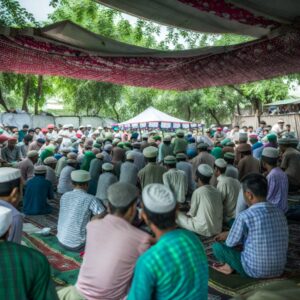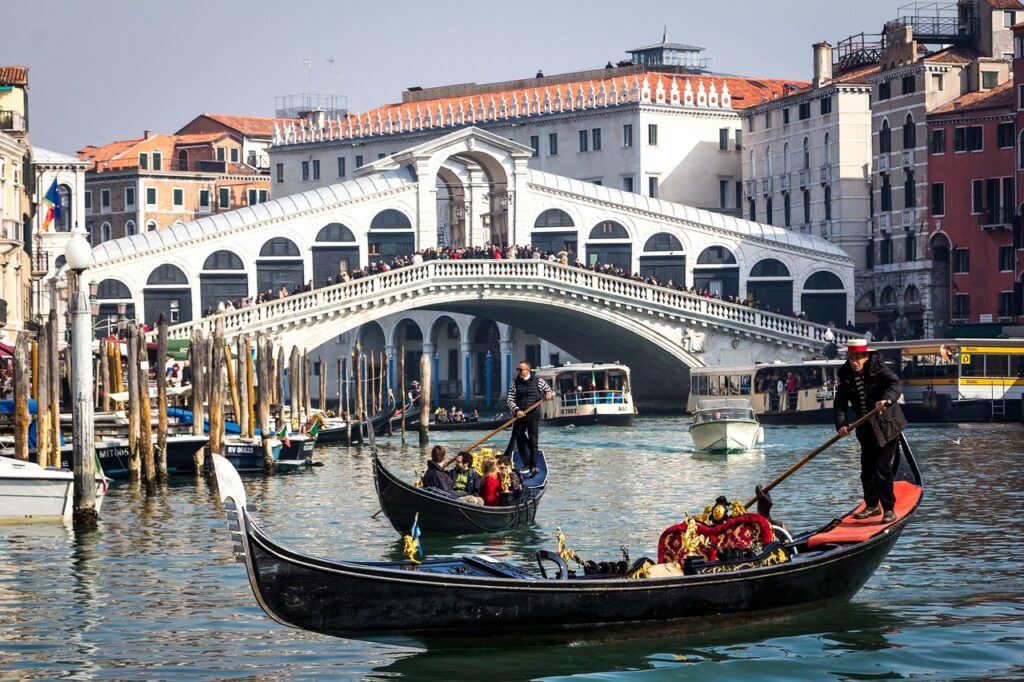Paharpur
Paharpur an important archaeological site in Bangladesh , situated in a village named Paharpur under the Badalgachhi Upazila of Naogaon district. The village is connected with the nearby Railway station Jamalganj, the district town Naogaon and Jaipurhat town by metalled roads. It is in the midst of alluvial flat plain of northern Bangladesh . In contrast to the monotonous level of the plain, stands the ruins of the lofty (about 24m high from the surrounding level) ancient temple which was covered with jungle, locally called Pahar or hill from which the name Paharpur is derived.
The site was first noticed by Buchanon Hamilton in course of his survey in Eastern India between 1807 and 1812. It was next visited by Westmacott. Sir Alexander Cunningham visited the place in 1879. Cunningham intended to carry out an extensive excavation in the mound. But he was prevented by zamindar of Balihar, the owner of the land. So he had to be satisfied with limited excavation in a small part of the monastic area and top of the central mound. In the latter area he ‘discovered the ruins of a square tower of 22 feet side with a projection in the middle of each side’. The site was declared to be protected by the Archaeological Survey of India in 1919 under the Ancient Monuments Preser-vation Act of 1904.
Regular and systematic excavation was jointly started here in 1923 by Archaeological Survey of India, Varendra Research Society of Rajshahi and Calcutta University . In the beginning the joint mission carried out the work with the financial help of Kumar Sarat Kumar Ray of Dighapatia Zamindar family and under the guidance of Dr Bhandarkar, Professor of Ancient History and former Superintendent of Archaeological Survey of India, Western Circle . The work was confined to a few rooms at the south-west corner of the monastery and the adjoining courtyard. The work was resumed in 1925-26 by RD Banerjee, who excavated in the northern part of the central mound. From the next season (1926-27) onward excavation was carried out under the supervision of KN Dikshit with the exception of seasons of the 1930-32. In these two seasons GC Chandra conducted the excavation. In the last two seasons (1932-34) the work was carried out at Satyapir Bhita, a mound at a distance of 364m east of the central temple. During Pakistan period lower levels of a few monastic cells on the eastern wing were excavated by Rafique Mughal, but the results were never published.
After independence the site was further brought under excavation by the Department of Archaeology of Bangladesh . The operations took place in two phases. The first phase was initiated in 1981-82 and continued in every season up to 1984-1985. The second phase was started in 1988-89 and continued in the next two seasons up to 1990-91. In the first phase excavations were aimed at establishing the three major building phases of the cells which Dikshit mentioned in his excavation report and discovering the information of early levels. But in the second phase the works were confined to clear the cultural debris from the courtyard of the monastery.
Architectural remains Pre-liberation expeditions have revealed the architectural remains of a vast Buddhist monastery, the Somapura Mahavihara, measuring 274.15m N-S and 273.70m E-W. This gigantic establishment with surrounding 177 monastic cells, gateways, votive stupas, minor chapels, tank and a multitude of other structures for the convenience of the inmates, is dominated by a central shrine, conspicuous by its lofty height and architectural peculiarities. It is distinguished by its cruciform shape with angles of projection between the arms, its three raised terraces and complicated scheme of decoration of walls with carved brick cornices, friezes of terracotta plaques and stone reliefs.
The monastery The entire establishment, occupying a quadrangular court, has high enclosure walls, about 5m in thickness and from 3.6m to 4.5m in height. Though the walls are not preserved to a very great height, but from their thickness and massiveness it can be assumed that the structure was storeyed commensurate with the lofty central shrine.
In plan it consists of rows of cells, each approximately 4.26 4.11m in area all connected by a spacious verandah (about 2.43 to 2.74m wide), running continuously all around, and approached from the inner courtyard by flight of steps provided in the middle of each of the four sides.
Mainamati
Mainamati, first discovered in 1803, is under threat of a fast growing township near Comilla. An isolated ridge of low hills in the eastern margins of deltaic Bangladesh , about 8 km to the west of Comilla town, Mainamati is a very familiar name in our cultural heritage, where archaeological excavations have revealed very significant materials. A landmark of our ancient history, it represents a small mass of quasi-lateritic old alluvium.
The ridge, set in the vast expanse of the fertile lower Meghna basin, extends for about 17 km north-south from Mainamati village on the Gumti River to Chandi Mura near the Lalmai railway station. In its widest parts, the ridge is about 4.5 km across and its highest peaks attain a height of about 45 metres. These highlands were once thickly wooded with an abundance of wild life, but modern developments have rudely disturbed its serene and idyllic setting.
With a fast growing township at Kotbari in about its centre, the fairy-tale beauty of the place is already a thing of the past.
The twin names – Lalmai- Mainamati – of the place have significant link with the past: Lalmai or the southern part is identical with Lalambi-vana of the Chandra epigraphs, while the northern part recalls the name of the legendary Chandra queen ‘Maynamati’, mentioned in local ballads and folk-songs. The archaeological finds have now established beyond any doubt that the cultural and political centre of ancient Vanga-Samatata (southeast Bengal ) was located here. The glory and magnitude of that remarkable past is emphatically manifest in the innumerable monuments, mounds and excavated remains, adequately supplemented by an impressive array of stray finds from the area. Mainamati today is, however, better known for its Buddhist remains exposed by excavations. Here, indeed, lies the greatest assemblage of ancient Buddhist remains in Bangladesh .
During the course of rebuilding the old axial road through these hills in 1875, workers accidentally uncovered the ruins of what at that time was thought to be ‘a small brick fort’. It was actually a Buddhist monastery. Some 72 years earlier (1803), from the same area, was discovered the first Mainamati relic, the copperplate of Ranavankamalla Hari-kaladeva, dated 1220 AD, which records a description of the capital city of Pattikera as ‘adorned with forts and monasteries’. The name now survives in the modern Patikara pargana of the locality.
The Mainamati ruins were rediscovered during the Second World War. While setting up an advance camp, the military came across ancient remains at a number of points in the ridge. In the hurried survey that followed, 18 sites were recognised and protected by the government. In more regular and systematic surveys undertaken between 1955 and 1957, when the entire ridge was undisturbed by human occupation, more than 50 sites were located. Most of those sites lie in the northern half of the ridge, now within the Cantonment. Archaeological excavations started in January 1955. In several phases of excavation of the 50 odd sites nine have so far been exposed. Though the excavations have not yet been completed and have been limited in many respects, the results so far obtained and the information gained provide a sound archaeological basis for the reconstruction of the history and culture of the early period of this hitherto obscure region.
Most important among the excavated sites is shalvan vihara, which lies about the middle of the ridge in the vicinity of the present day Bangladesh Academy for Rural Development (BARD) at Kotbari. Excavations have exposed a large Paharpur type Buddhist monastery and a wealth of material objects datable from the 7th to 12th centuries AD. The discoveries from the site include eight inscribed copperplates, about 400 gold and silver coins, many terracotta and baked clay seals and sealings, a large number of sculptural specimens in stone, bronze and terracotta found in situ or otherwise. The grand monastery together with its central shrine was built by Shri Bhavadeva, the fourth ruler of the early deva dynasty of devaparvata, sometime towards the end of the 7th or early 8th century AD.
At Kutila Mura, the highest mound in the northeastern part of the ridge near Ananda vihara, were unearthed the most attractive monuments in Mainamati. The excavated monuments include three principal stupas and a number of subsidiary chapels and chaitya-halls built around them, all of which were enclosed by a massive boundary wall. Interesting and intricate structural forms and decorative styles have been preserved at the site.
Largest among the Mainamati monuments is the Ananda Vihara. Situated in the archaeologically rich Kotbari central area, it represents a huge religious-cum-educational establishment of viharas, stupas and chapels all around. Together with the largest water tank in the area, this Vihara complex was built by Shri Anandadeva, the third ruler of the early Deva dynasty, sometime at the end of the 7th or beginning of the 8th century AD.




